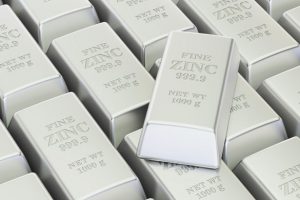Zinc prices rising as inventory disappears by the day
Much has been said about the trials and tribulations of the aluminum market, particularly of the impact on smelter output from energy rationing in China last year and then rapidly escalating energy prices in Europe this winter.
Russia’s invasion of Ukraine turbocharged prices. Fears rose over already constrained oil and natural gas supplies to Europe getting even worse. In the face of rapidly escalating energy costs, European smelters began partial and even complete closures of smelters pending a drop in power costs.
But, of course, the dynamic driving aluminum prices has been having exactly the same impact on all smelting or refining processes that are heavily reliant on electricity. For example, EAF blast furnaces for steel have also faced similar pressures.
Today, however, we’ll take a look at zinc smelters and zinc prices.
Meanwhile, the MetalMiner weekly newsletter includes similar analysis every Wednesday, covering base metals, steel, precious metals and a wide variety of factors impacting metals markets.
Rising zinc prices
Zinc is not normally considered a sister metal to aluminum. However, from a cost of production profile, it is remarkably similar.
So, it’s no surprise that Reuters reports the same dynamic playing out in Europe for zinc as for aluminum.
Firstly, exchange and trade inventory has been falling dramatically. It’s fallen to the point where the LME’s European warehouses are virtually empty when cancellations pending physical loadout are taken into account.
LME-registered stocks in the United States have fallen to a low of 25,925 tons. Available tonnage is lower still at 19,825 tons, the post reports. That compares to this time last year, when New Orleans alone held almost 100,000 tons of zinc.
For addition zinc analysis, the MetalMiner Monthly Metals Outlook, available to corporate subscribers, breaks down the market comprehensively.
Physical delivery premiums reflect shortfall
Secondly, and not surprisingly in view of the above, physical delivery premiums also underline the dire shortage of physical metal.
The premium for special-high-grade zinc at the Belgian port of Antwerp has risen to $450 per ton from $170 last October before the winter heating crisis kicked in. Meanwhile, the Italian premium has exploded from $215.00 to $462.50 per ton over the same time frame, according to Reuters.
In the U.S., Fastmarkets estimates Midwest physical premiums are up by 24% to 26-30 cents per pound ($573-$661 per metric ton).
This is largely an energy-related tightness. Russia is not a significant zinc supplier to Europe. However, the war is a direct cause of high power costs. So, to that extent, Europe and North America are going to be beholden on solutions to the conflict before power costs stand much chance of easing.
The situation in the Far East, by comparison, is almost a parallel universe. The LME’s Singapore warehouse holds nearly 82,000 tons. SHFE warehouses hold over 177,000 tons. As such, those figures raise the prospect of an arbitrage-induced flow of metal from east to west in coming months.
Reuters relays ILZSG estimates that the zinc market posted a deficit last year of 194,000 tons, largely a result of energy issues. That is contrary to predictions earlier in 2021 that the market would see a surplus of 353,000 ton. That’s a half-million-ton loss of supply, initially in China and then in Europe.
But China’s energy problems are easing. With that, aluminum and zinc production has been rising strongly this quarter. What seems less likely is a resolution anytime soon to Europe’s woes.
Relief for zinc consumers appears to be increasingly distant (in the West, at least).




Leave a Reply